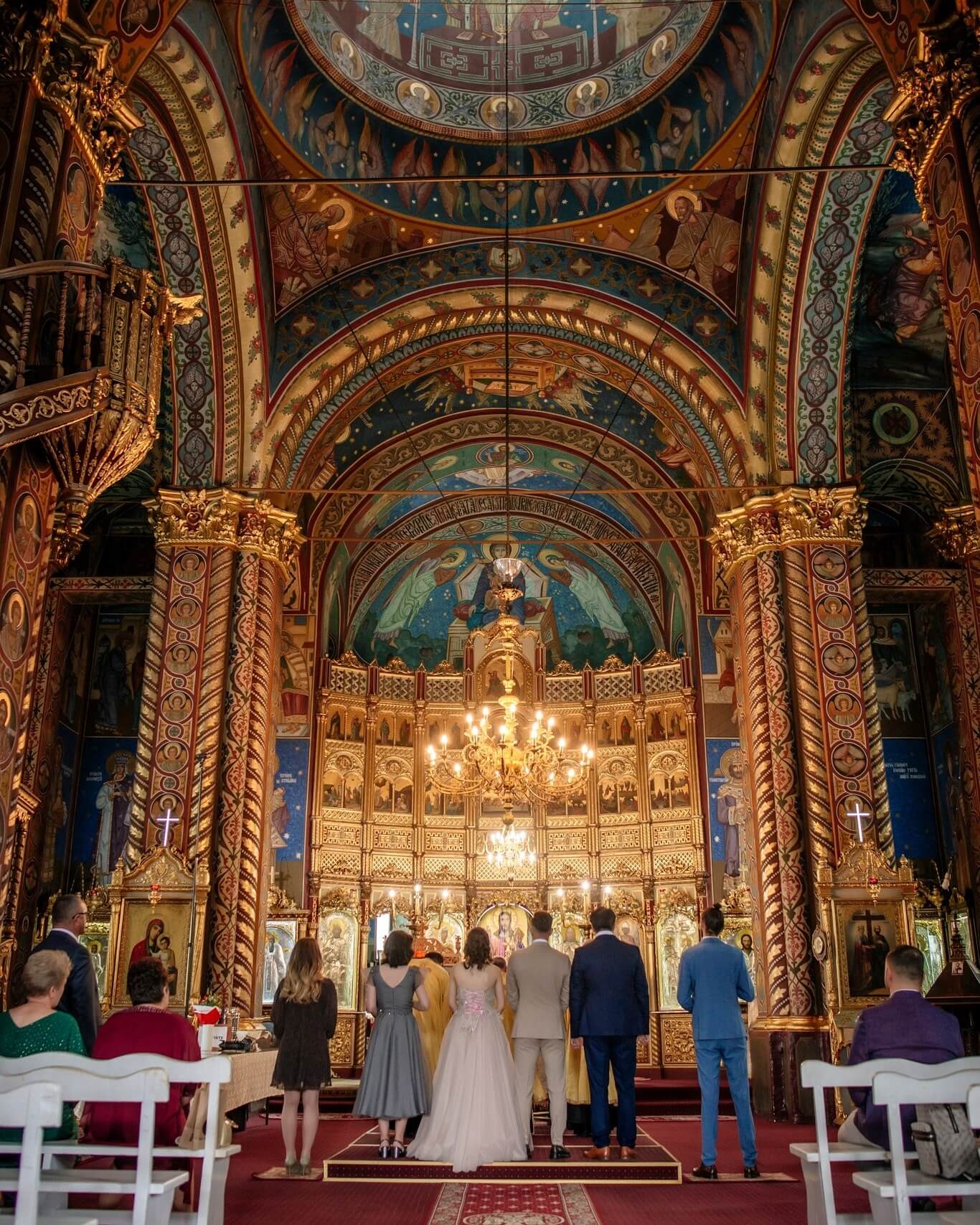History of the Church of the Holy Emperors in Ploiești
Tried by time, but steadfast in faith
For over a century, our church has guarded the city as a symbol of unwavering faith. Built on the foundation of tradition and piety, it has witnessed the ages, going through times of trial, earthquakes and destruction, but each time it has been reborn, stronger and more beautiful.
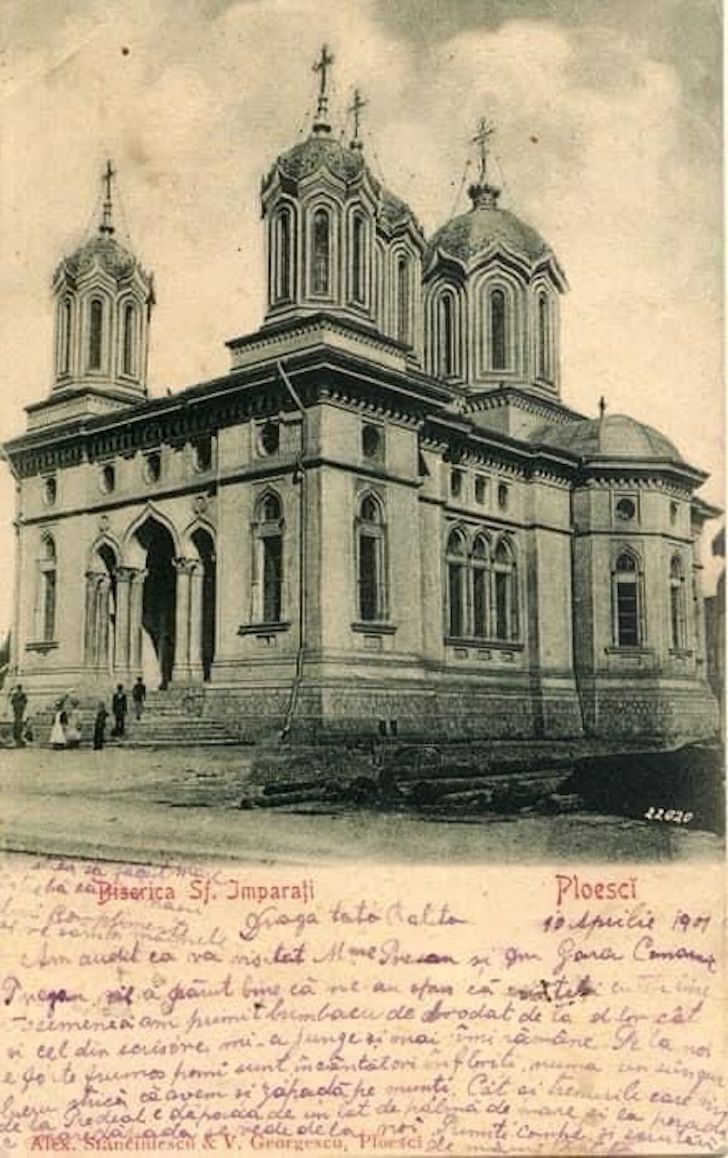
☦ Since 1902
In the heart of Ploiești, located between Take Ionescu, I. L. Caragiale and Mărășești streets, the Church of the Holy Emperors "Constantine and Elena" has stood prominently. The church occupies the site of two older churches. Nothing is known about the first. The second, built in 1831, is documented by an inscription in Cyrillic characters that reads:
“This Holy and Divine church, dedicated to the Holy Emperors Constantine and Elena, was built from its foundation under Metropolitan Kir Grigorie, through the diligence and expense of Kir Polihronie D. and Kir Boșcul, together with other slum dwellers and Orthodox Christians. Year 1831, August 29.“
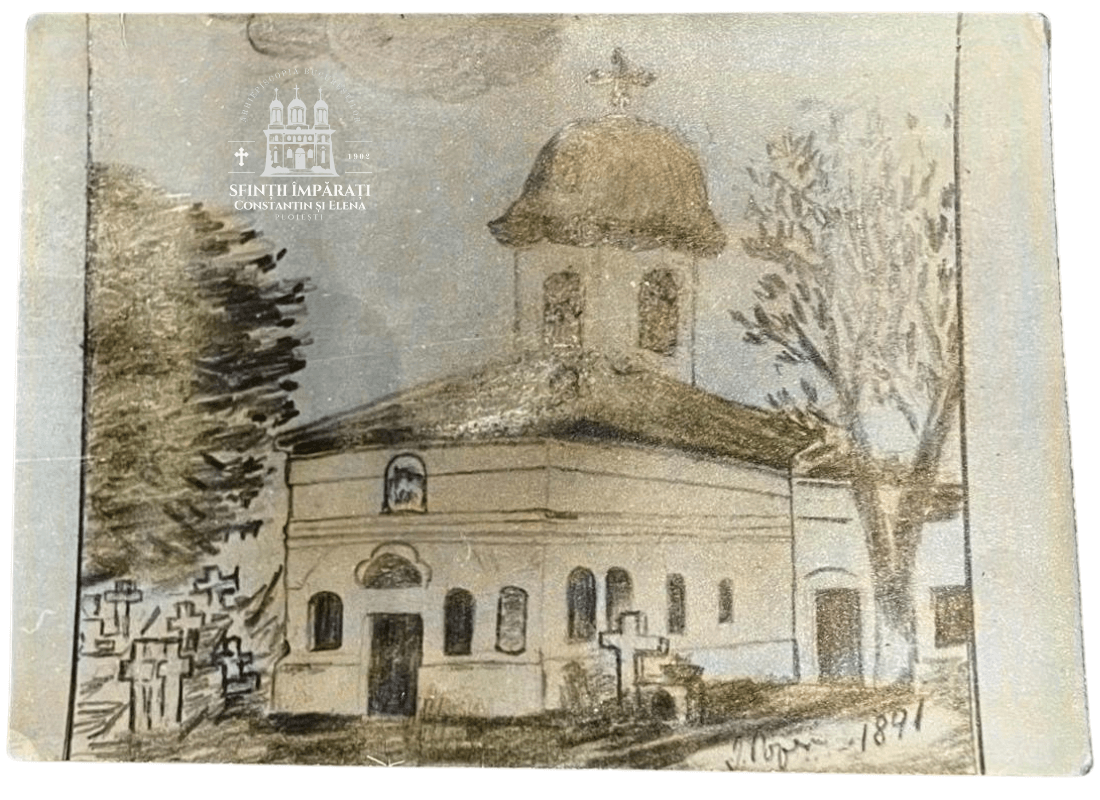
As the second church became insufficient for the growing number of parishioners, they, along with the dedicated founder priest Costache Teodorescu, initiated the construction of the current church. Building began on June 17, 1894 and was completed in 1902 funded by donations from the Metropolitanate, the county, the City Hall, the parishioners and beyond other benefactors from the city and beyond, as noted in the second inscription on the church's frontispiece. The church was consecrated on November 10, 1902, under Metropolitan Iosif Gheorghian, with Ioan Socolescu as the architect.
The earthquake of November 10, 1940 destroyed the large brick tower, which caused the collapse of parts of the nave. The other three towers were severely damaged and the roof was destroyed. Renovation began in 1941, following plans by architects Toma Socolescu, D. Ionescu Berechet and Naumescu, with assistance from concrete engineer Cora.
The large tower was rebuilt in reinforced concrete, the other three towers were strengthened and the roof was repaired. After reinforcement and replastering painting commenced. However in 1944, aerial bombings caused further damage, requiring additional repairs before the painting could be completed.
The church was reconsecrated on Sunday, December 16, 1945, during the pastorate of His Holiness Patriarch Nicodim, by Bishop Gafton, accompanied by an impressive assembly of priests and deacons, as indicated in the third inscription on the frontispiece. The parish priest at the time was Father Aurel Popescu.
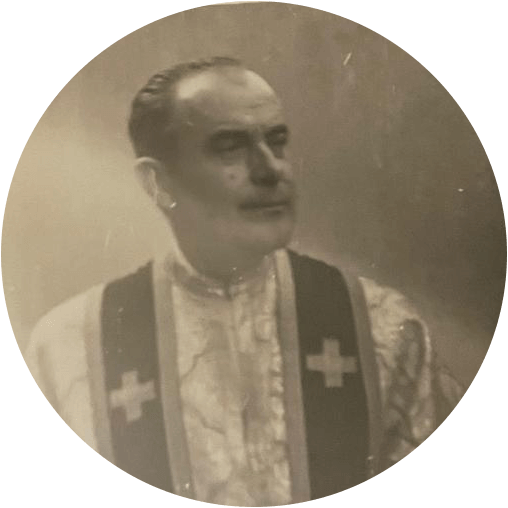
Church worker, 1947-1991
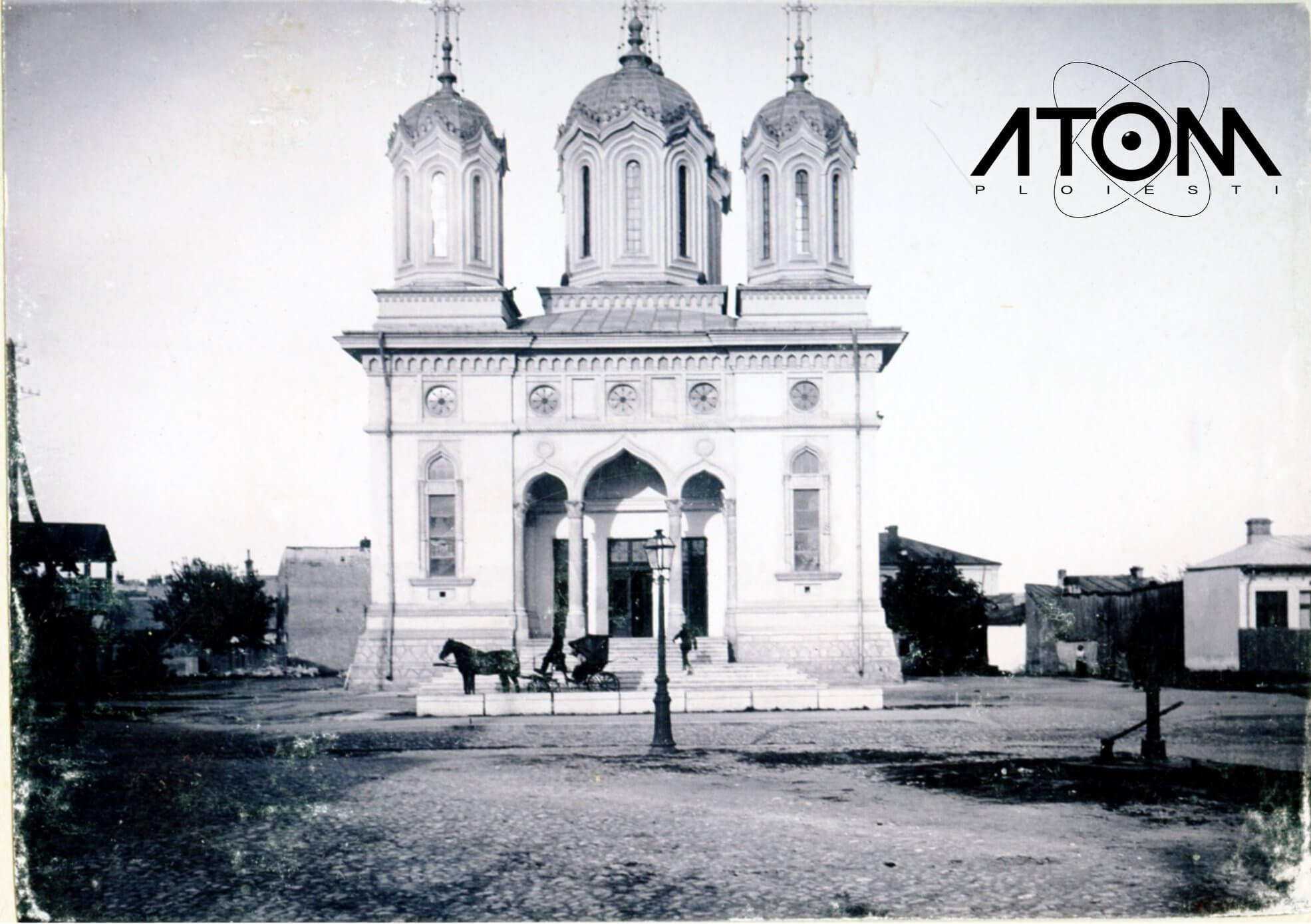
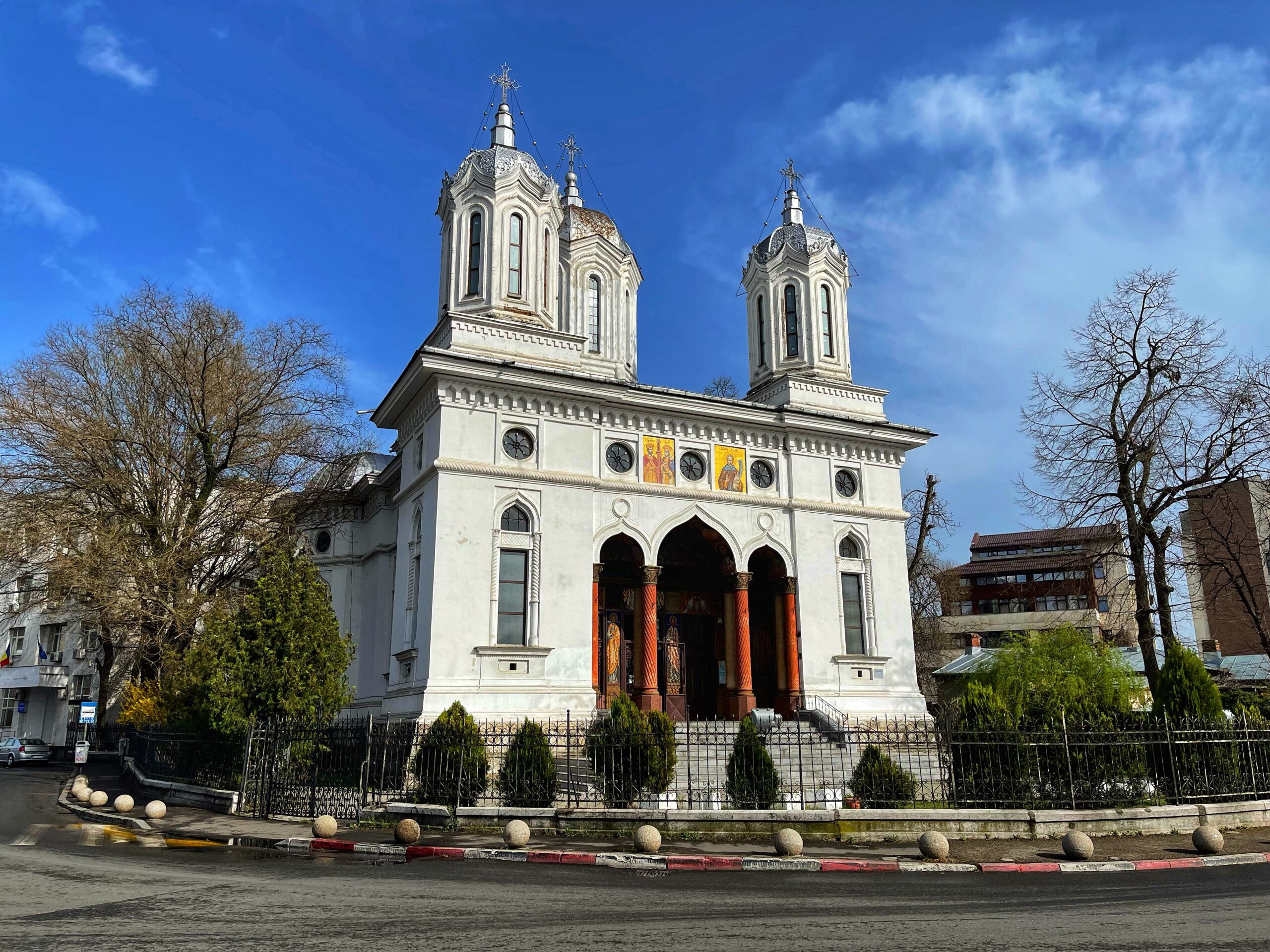
Architecturally, the church is a striking and imposing Byzantine-style monument
The interior measures 39 meters in length, 15.30 meters in width, and 21.20 meters at the nave. The vaults of the narthex and nave, along with the balustrades on both sides are supported by eight majestic, richly decorated pillars. The oak iconostasis, carved with great craftsmanship, features intricate lacework and decorative elements, adorned with 11 large silver clad icons.
Externally, the church features a cathedral portal at the entrance, preceded by wide, light-filled steps. Four magnificent spires give the church a distinctive appearance, reminiscent of the Curtea de Argeș monastery, as noted by M. Sevastos in his monograph on Ploiești. The structure is built of brick on a two-meter-high stone plinth, with walls nearly 1.5 meters thick. The roof is made of galvanized iron.
Church painting,
made in the "fresco" technique
The painting, begun in 1940 and finished in 1945, is the work of painter Nicolae Pană, under the supervision of Professor I. D. Stefanescu, president of the church painting commission. Executed in the “fresco” technique, the paintings remained in good condition, until the earthquake of March 4, 1977, which caused significant damaged to both the frescoes and the smaller architectural elements.
In 1986, the damage was repaired, preparing the church for the restoration of the painting. However, another earthquake on August 30, 1986, further damaged the frescoes and the structure of the church, making restoration unfeasible and necessitating consolidation instead.
Consolidation work began in 1989 under the leadership of the parish priest Mihail Colotelo. The plaster was stripped down to the brick, the walls were reinforced with iron mesh, pillars were added to support the large spire, the small spire was straightened, and the entire church was replastered.
In 1994, the frescoes were repainted, also in the “fresco” technique, by painter Ene Ion from Bucov. These works were completed in 1999, under the parish priest Anghel Marin.
The pictorial compositions are striking and captivating, characterized by a lively, warm tone that reflects the painter’s effort to create authentic Byzantine art. The ensemble is grandiose, with warm, masterfully combined tones, harmonious colors, and a rich visual landscape.
The portraits are remarkable for their plasticity and expressiveness, while the themes are dynamic and action filled. The extensive array of themes and painted figures forms a concise Christian encyclopedia, embodying the essence and spirit of Orthodoxy.
On November 14, 1999, the rededication service was performed by His Grace Vicențiu Ploieșteanul - patriarchal vicar, accompanied by an assembly of priests, with Archpriest Gheorghe Lazăr presiding.
